The Personal Journey of Type 2 Diabetes
Of the 3 main forms of diabetes, type 2 diabetes is by far the most common, as it accounts for over 90 percent of cases of diabetes. This was our 6th Annual Type 2 Diabetes In America survey, where we aim to learn more about living with type 2 diabetes and how it impacts daily life. Living with type 2 diabetes can look very different depending on the person. Treatment and medicines, eating habits, and physical activity are all very personal decisions and are affected and influenced by many factors. To better understand how type 2 diabetes affects physical and mental health, quality of life, and relationships, we asked more than 2,200 people to share their type 2 diabetes journey.
The diagnosis experience
Age of diagnosis varied significantly for our survey respondents, with the average age range being 50 and 59. Our results showed it was uncommon to be diagnosed after that age of 70, but somewhat common to be diagnosed at a young age (before 40).
The majority of our respondents were diagnosed by their primary care or family physician. While everyone’s diagnosis experience may be different, it is the start of their type 2 diabetes journey and likely a number of treatment and lifestyle changes.
Working with Certified Diabetes Educators (CDE)
Not everyone was referred to or currently sees a CDE, but they have a positive impact on diabetes care. So what are the barriers to seeing a CDE? We’ve heard from our community members that barriers can include lack of insurance coverage, overall cost, and lack of knowledge about CDE resources.
Finding your way with treatment and medication
About 38 percent of respondents feeling their type 2 diabetes is controlled on their current treatment plan, which may include medicine (metformin, insulin, oral RX, injectables), diet, and/or exercise regimen. While some people can manage their diabetes with diet and exercise, others require medicine. Establishing a personal treatment/drug plan with the help of your healthcare provider can be a journey all on its own and may require tweaks, substitutions, and additions over time as your body changes.
Building the best eating habits for your body
Food plans or diets are a large aspect of managing type 2 diabetes. They are hot topic and sometimes a divisive topic in our community, as people form strong opinions about what diets work and do not work. It is important for people to understand that a certain way of eating (types of food, timing during the, etc.) may not work for someone else, because everyone’s bodies are different and react to food differently. It is always important to speak to a healthcare professional before making any major changes to your diet.
Day-to-day blood sugar monitoring
Checking blood sugar levels is another personal part of type 2 diabetes management. The number of times someone checks their blood sugar, when, and the measurement method they use, varies from person to person. It is extremely common for people to have questions about this or to not feel confident in their routine.
The 6th Annual Type 2 Diabetes In America survey was conducted online from June through August 2020. 2,282 people who have been diagnosed with type 2 diabetes completed the survey.

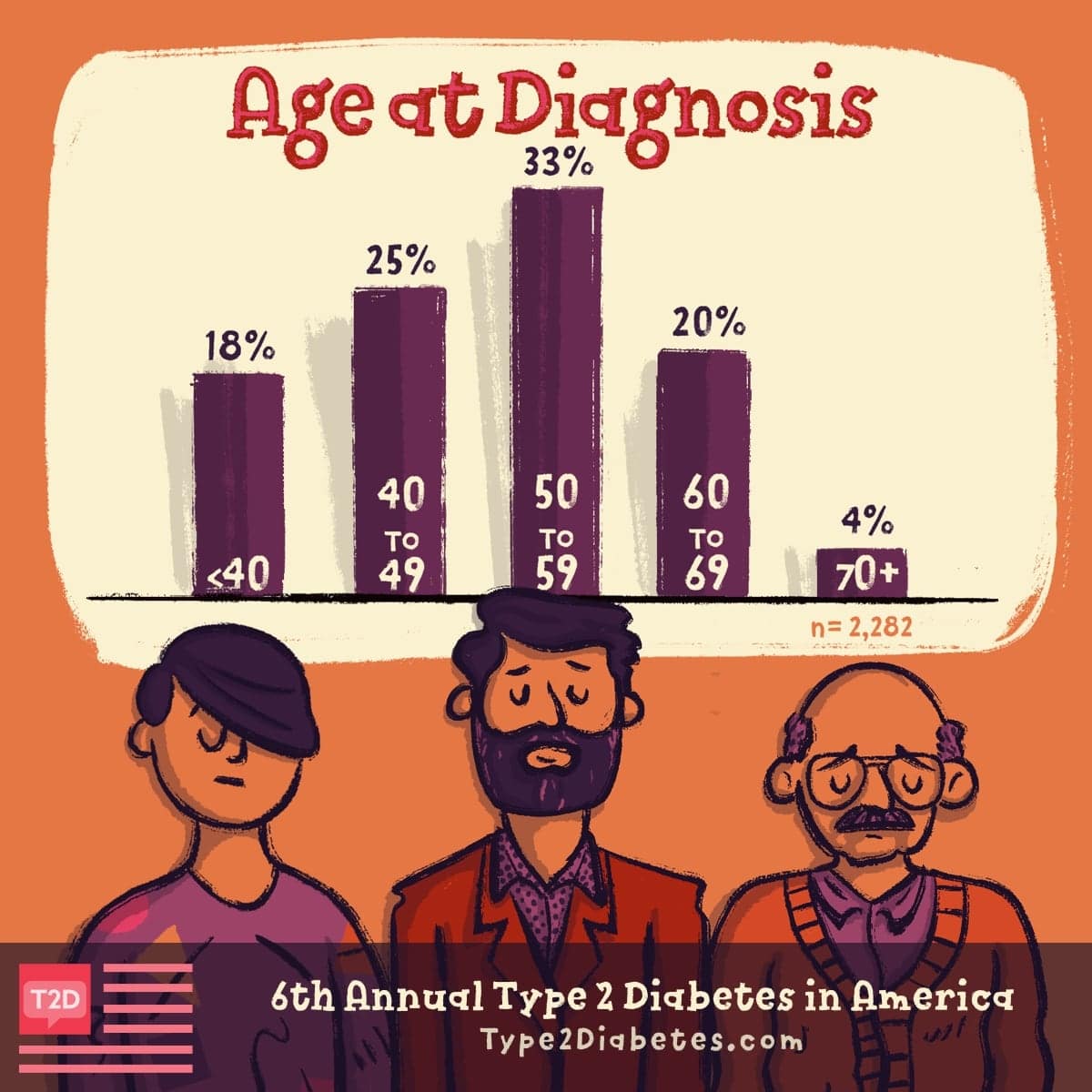
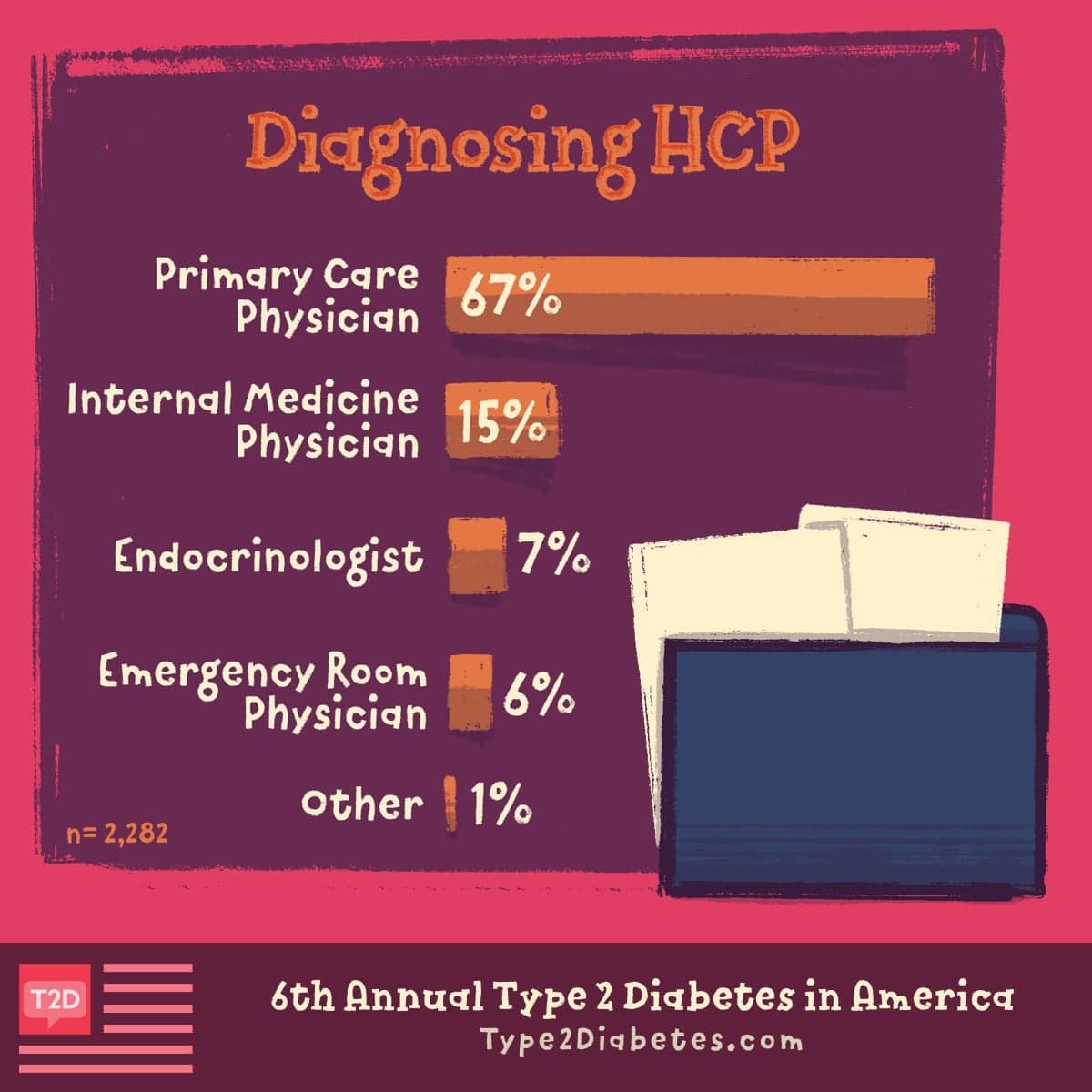
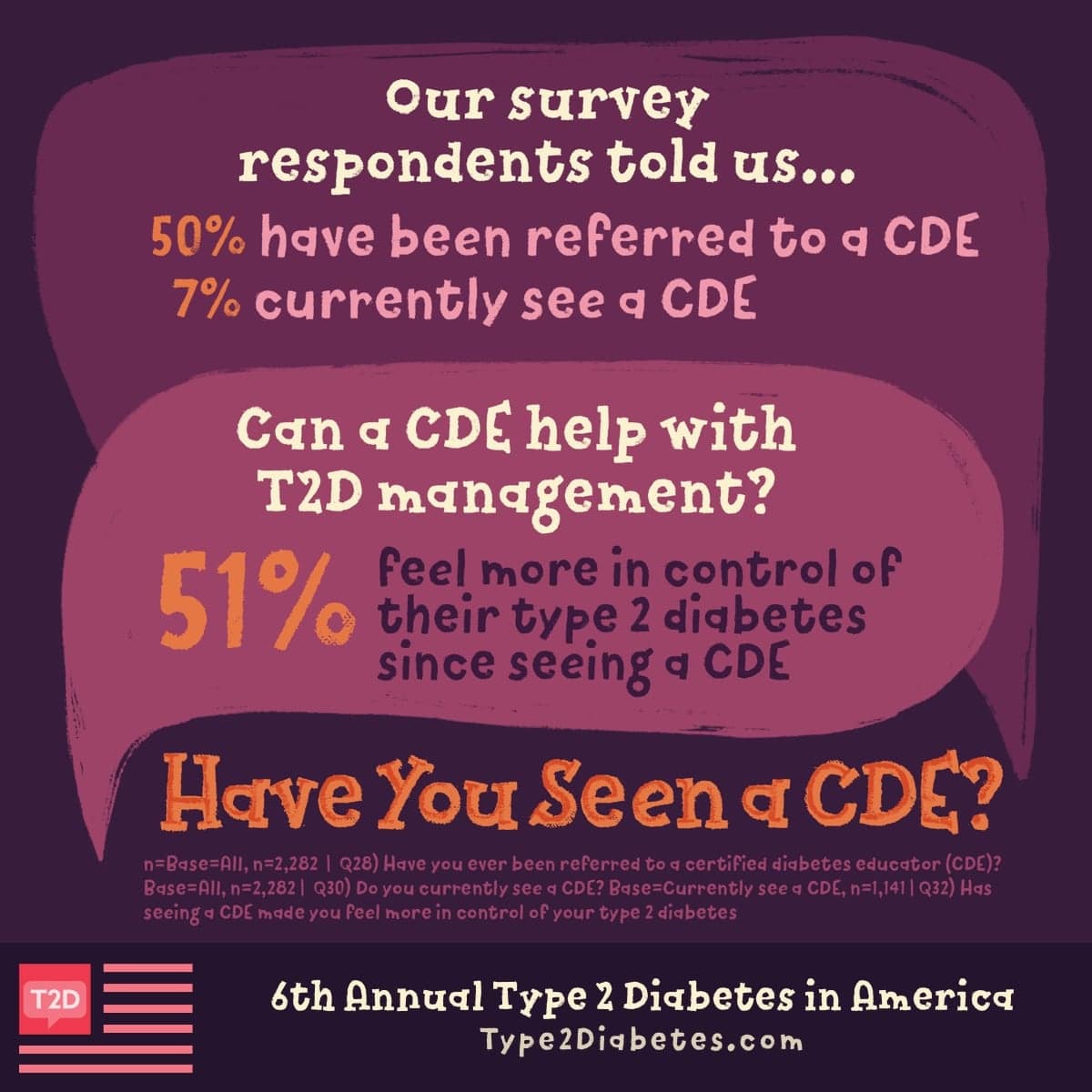
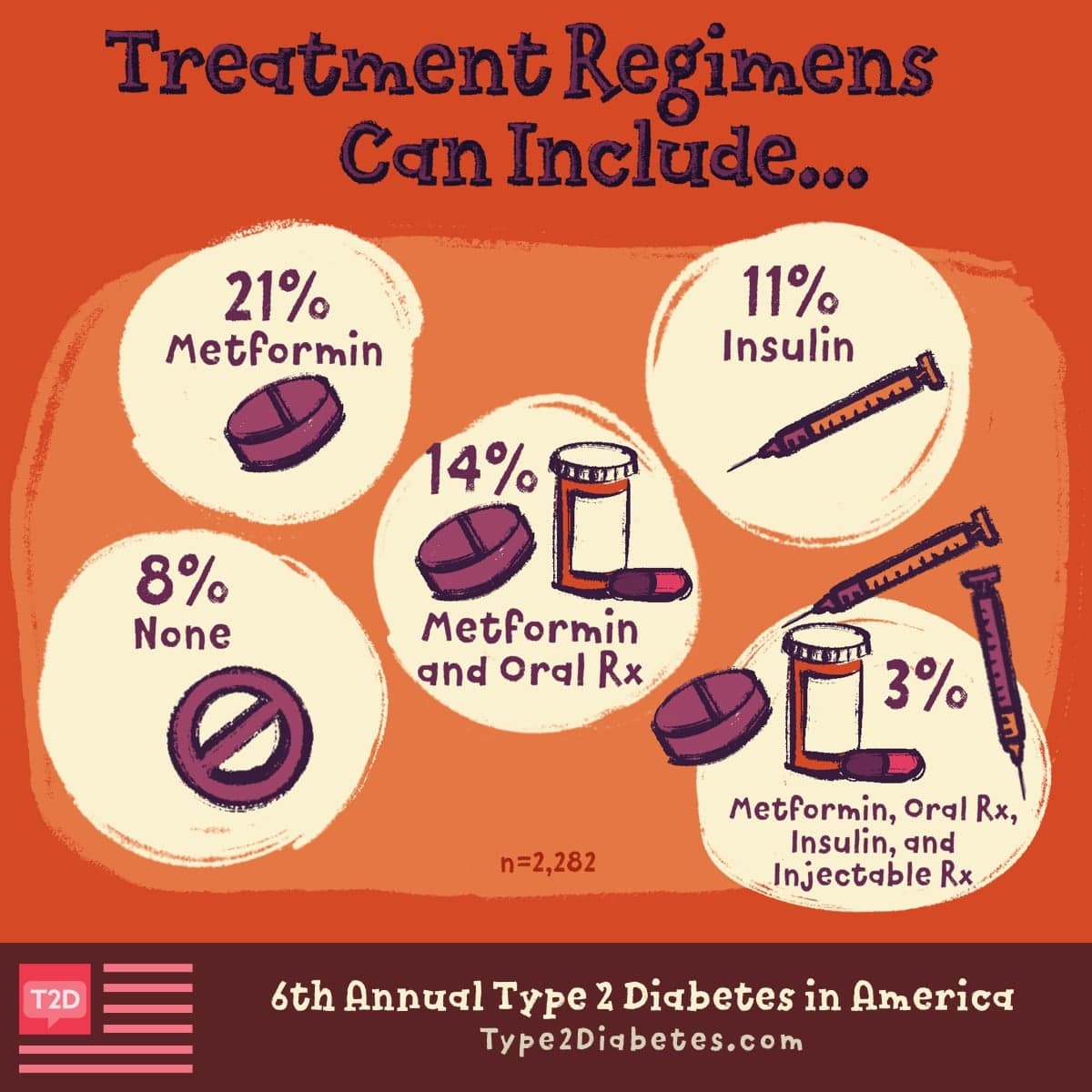
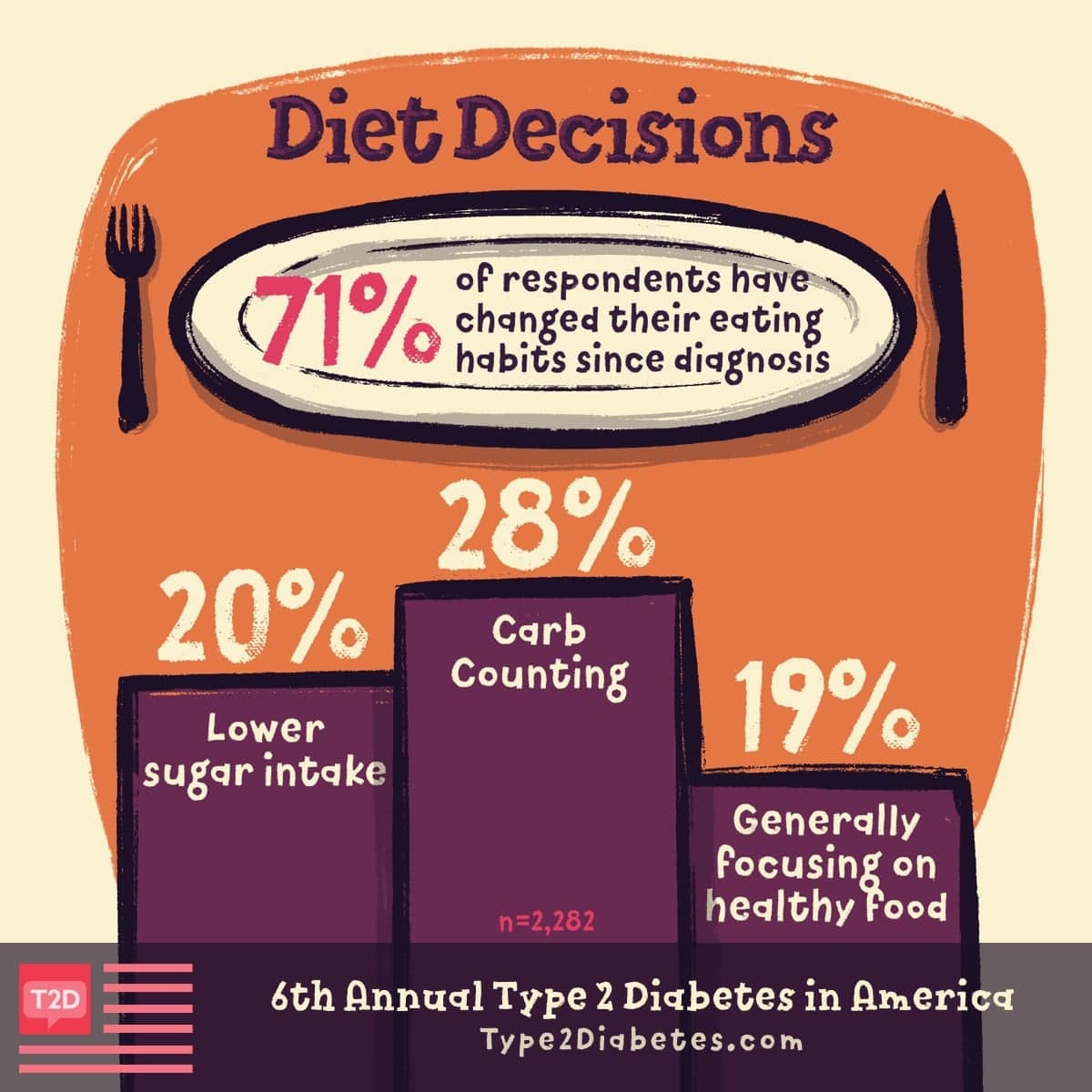
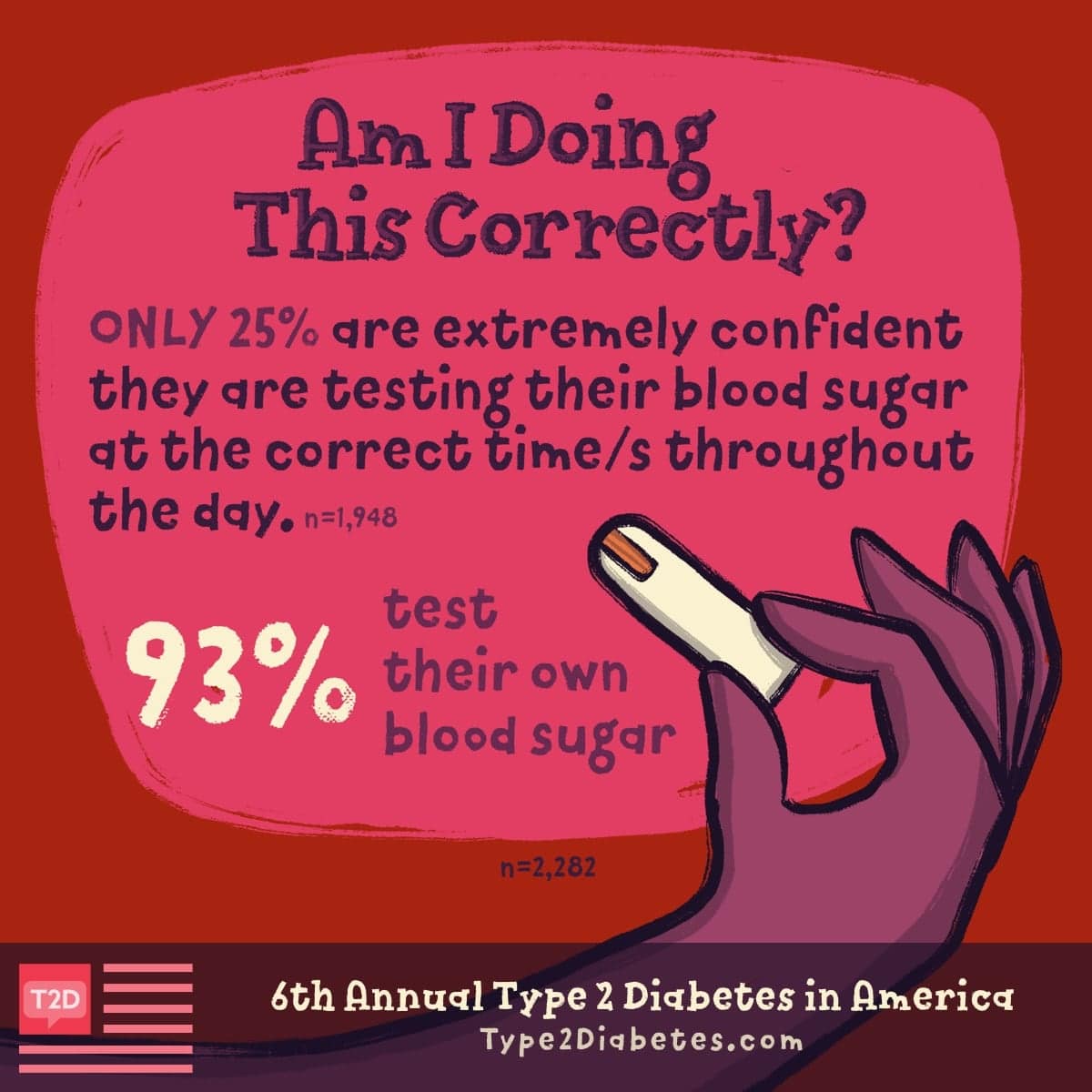
Join the conversation